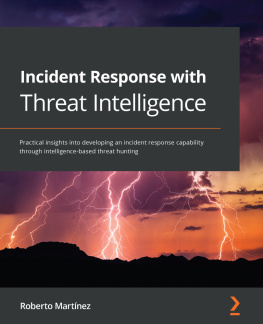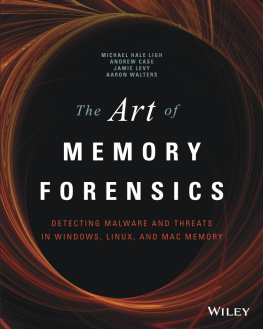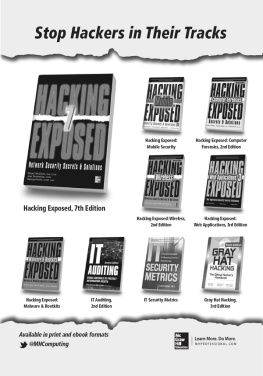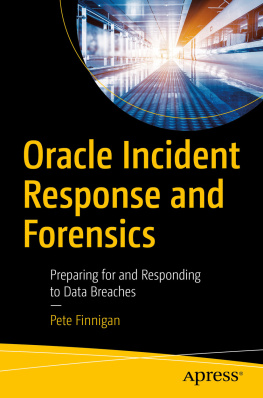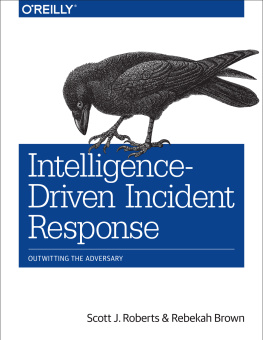Bradley - OS X Incident Response Scripting and Analysis
Here you can read online Bradley - OS X Incident Response Scripting and Analysis full text of the book (entire story) in english for free. Download pdf and epub, get meaning, cover and reviews about this ebook. year: 2016, publisher: Elsevier Science & Technology Books, genre: Computer. Description of the work, (preface) as well as reviews are available. Best literature library LitArk.com created for fans of good reading and offers a wide selection of genres:
Romance novel
Science fiction
Adventure
Detective
Science
History
Home and family
Prose
Art
Politics
Computer
Non-fiction
Religion
Business
Children
Humor
Choose a favorite category and find really read worthwhile books. Enjoy immersion in the world of imagination, feel the emotions of the characters or learn something new for yourself, make an fascinating discovery.

OS X Incident Response Scripting and Analysis: summary, description and annotation
We offer to read an annotation, description, summary or preface (depends on what the author of the book "OS X Incident Response Scripting and Analysis" wrote himself). If you haven't found the necessary information about the book — write in the comments, we will try to find it.
OS X Incident Response Scripting and Analysis — read online for free the complete book (whole text) full work
Below is the text of the book, divided by pages. System saving the place of the last page read, allows you to conveniently read the book "OS X Incident Response Scripting and Analysis" online for free, without having to search again every time where you left off. Put a bookmark, and you can go to the page where you finished reading at any time.
Font size:
Interval:
Bookmark:
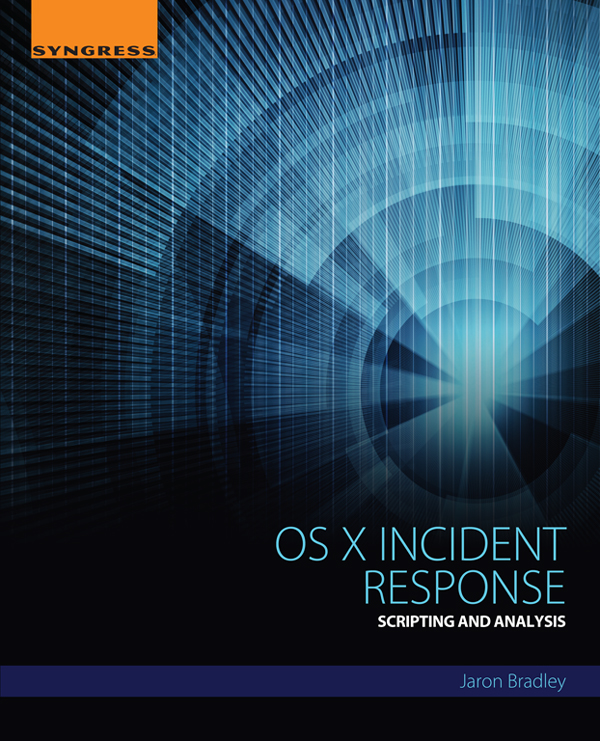

Syngress is an imprint of Elsevier
50 Hampshire Street, 5th Floor, Cambridge, MA 02139, USA
Copyright 2016 Elsevier Inc. All rights reserved.
No part of this publication may be reproduced or transmitted in any form or by any means, electronic or mechanical, including photocopying, recording, or any information storage and retrieval system, without permission in writing from the publisher. Details on how to seek permission, further information about the Publishers permissions policies and our arrangements with organizations such as the Copyright Clearance Center and the Copyright Licensing Agency, can be found at our website: www.elsevier.com/permissions.
This book and the individual contributions contained in it are protected under copyright by the Publisher (other than as may be noted herein).
Notices
Disclaimer
British Library Cataloguing-in-Publication Data
A catalogue record for this book is available from the British Library
Library of Congress Cataloging-in-Publication Data
A catalog record for this book is available from the Library of Congress
ISBN: 978-0-12-804456-8

Acquisition Editor: Chris Katsaropoulos
Editorial Project Manager: Anna Valutkevich
Production Project Manager: Mohana Natarajan
Cover Designer: Mark Rogers
Typeset by Thomson Digital
The StackOverflow Community for being a fantastic resource. draw.io for being free and awesome. Andrew Case and the Volatility team for the awesome work they do supporting OS X memory analysis. The guys over at the Rekall Team for supplying the community with a live memory analysis framework and the amazing pmem applications. Anyone who has ever written a blog post or write-up related to OS X security, administration, developer tutorials or unique findings. Kris Merritt for letting me join such an awesome team and putting me in a position where I can learn more about this topic. Brody Nisbet and William Pauley for their recommendations and assistance in cleaning up the introduction chapter. A big thanks to Christopher Schmitt and Adrian Maniatis for their assistance with writing and cleaning up my sloppy Python code. A big thanks to Patrick Wardle at Synack for all the amazing research hes been working on and presenting across different conferences as well as writing and maintaining the tools at objective-see.com. I referred to your documents, slides, and videos countless times while writing this book. A huge thanks to my technical reviewer Alex Radocea for his wisdom and guidance on all things OS X and his willingness to work with me nonstop while living in a polar opposite timezone. I could not have done this book without you. Finally, a thank you to my beautiful wife, for encouraging me to take on a new challenge.
This chapter begins by discussing why we will see OS X targeted more in the upcoming years as it gains popularity. We then dive into what defines the incident response process. It then goes on to discuss what the Cyber Kill Chain is as well as how it can apply to the OS X operating system. This chapter finishes by describing the scenario that is used for the analysis sections throughout the rest of the chapters.
Font size:
Interval:
Bookmark:
Similar books «OS X Incident Response Scripting and Analysis»
Look at similar books to OS X Incident Response Scripting and Analysis. We have selected literature similar in name and meaning in the hope of providing readers with more options to find new, interesting, not yet read works.
Discussion, reviews of the book OS X Incident Response Scripting and Analysis and just readers' own opinions. Leave your comments, write what you think about the work, its meaning or the main characters. Specify what exactly you liked and what you didn't like, and why you think so.







